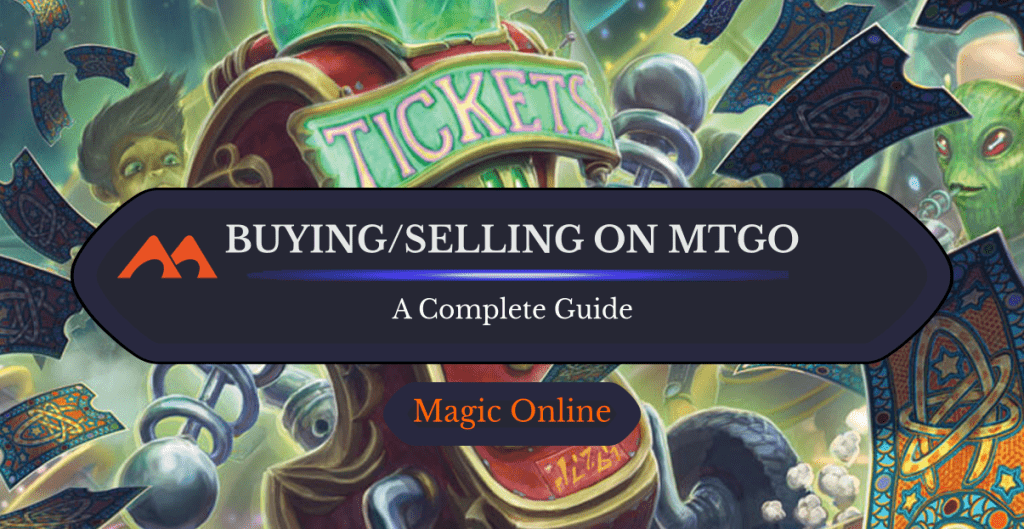
Ticketomaton | Illustration by Michael Phillippi
Embarking on the Magic Online platform is an exciting journey for any aspiring collector or player; however, being newer to the client can be tricky, and in most cases, you may end up paying more than you should for cards when you start building your collection.
This comprehensive guide will navigate the nuances of buying and selling cards, exploring different avenues to enhance your MTG experience. From the convenience of direct store purchases to the intricacies of dealing with bots, I’ll delve into the details of each option so you’re better informed about where to buy and sell your cards.
Intrigued? Let’s dive right into it!
Buying Cards on Magic Online
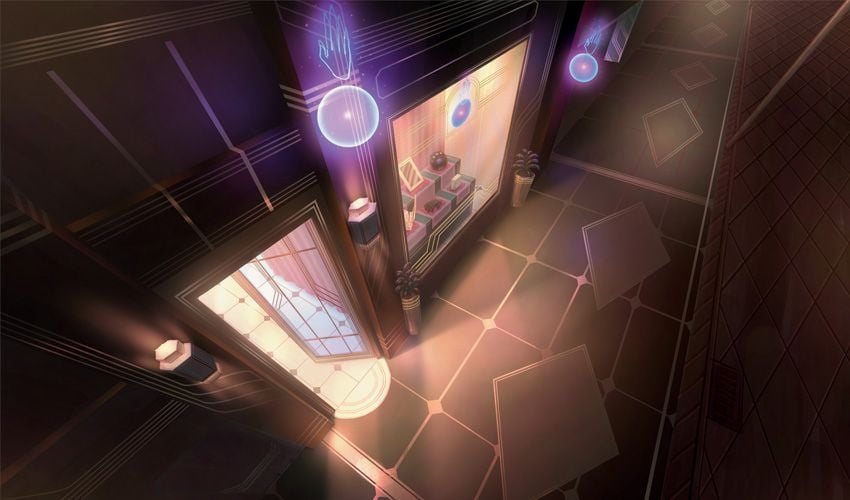
Obscura Storefront | Illustration by Muhammad Firdaus
Buy From Store
Buying sealed products, tickets, and bundles from the store is a straightforward way to start your collection. To do this, go to the Store Tab inside the MTGO Client, select the product of your liking, and add it to your cart. Most of the time, there's no limit on how many you can buy. In the case of Tickets, the accepted payment methods are credit card and Paypal, with the latter being the most commonly used among other bot chains (we’ll cover that in a moment).
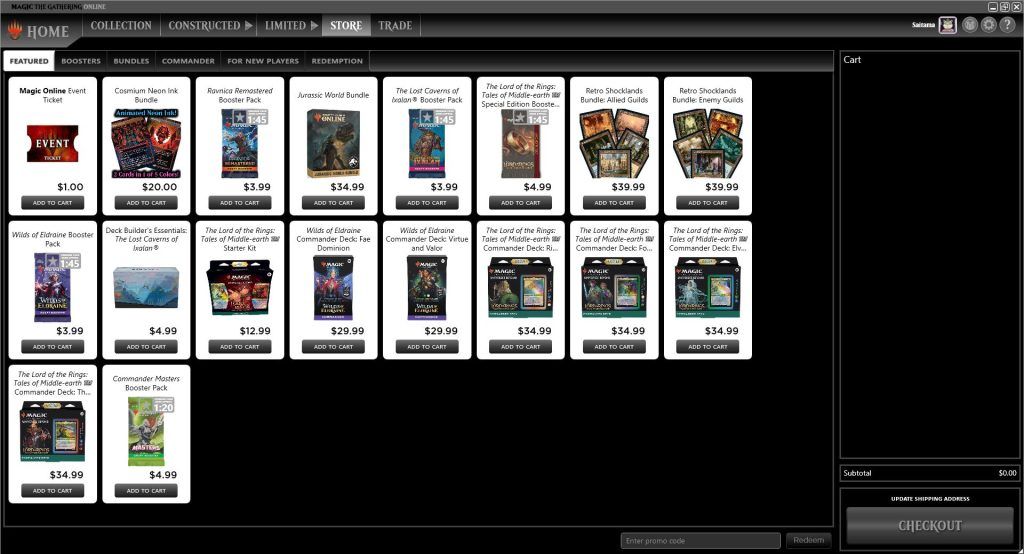
The “advantage” of purchasing directly from the store is that the support is straightforward and direct with WotC itself, without third parties involved. The process is usually very smooth in case of issues with your order or purchases that may result in a refund.
Goat Bots
When it comes to buying cards from bots, I usually prefer Goatbots because they have a webpage with all the prices of cards in tix. The process is usually smooth if you’re paying with tickets or credit. Simply add all the cards you want through the webpage, and once you’re finished, the delivery process will start. A bot will contact you to start the transactions and give you the cards you selected. It’s very handy when you have spare credit because, at that point, the bot will just get the cards for you to grab them without putting tickets in your binder.
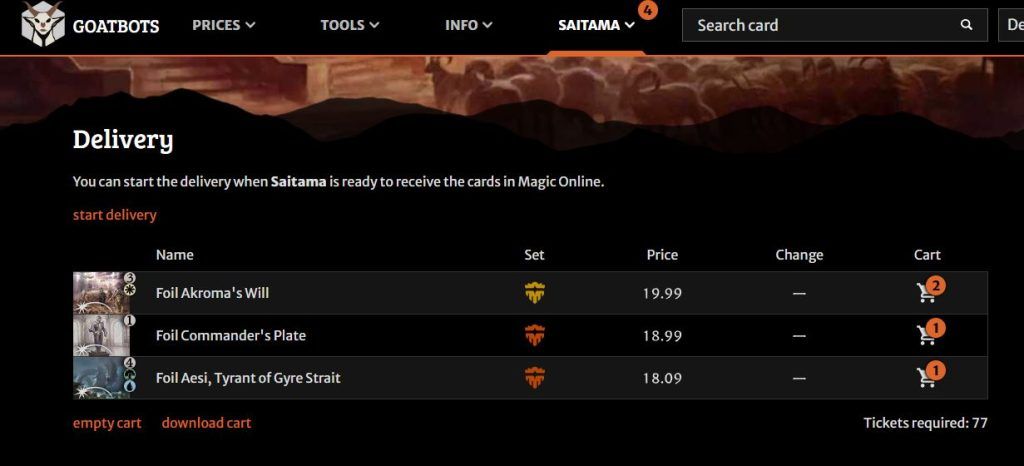
Cardhoarder
Cardhoarder is my second option when it comes to buying cards with tickets, but my first when it comes to buying tickets themselves and also purchasing cards with real money. This is because tickets usually come down to a fair and competitive price, pretty much on par with what other chains offer, and you pay a few cents less than what you would when buying them directly from the store. This can range from two to three cents, which may not seem like much, but when you buy tickets in bulk for entering challenges or buying other cards, it's very useful. You’ll be up one or two tickets depending on the quantity you purchase.
Another benefit of buying cards with real money is that usually, you get a discounted price for your products that can go from 5-8%, and despite the prices being a little bit higher than others like Goatbots, the discount makes up for it, and your cards end up costing significantly less. The process, similar to GoatBots, is triggered by a webpage purchase, and you can opt to get an automated process or be delivered by a human (through a bot).
What I really, really like about them is that regardless of the transaction you’re making, you always have access to a chat where you can submit your inquiries with a customer service representative, while Goatbots handles everything through email. A major drawback from Cardhoarder, though, is that bulk cards and commons are always sold at 0.05 TIX, while Goatbots usually sells the same cards at only 0.005, meaning that you can get 10 cards for the price of one Cardhoarder common. While this seems minor, you usually buy commons in sets that add up to more than a ticket when it comes to building multiple decks.
DojoTradeBots
Another reliable option for buying cards is DojoTradebots. Prices are often similar to the other previous options. However, you may find specific versions of cards that you can’t find anywhere else. Other than that, I would rely on the two chains above.
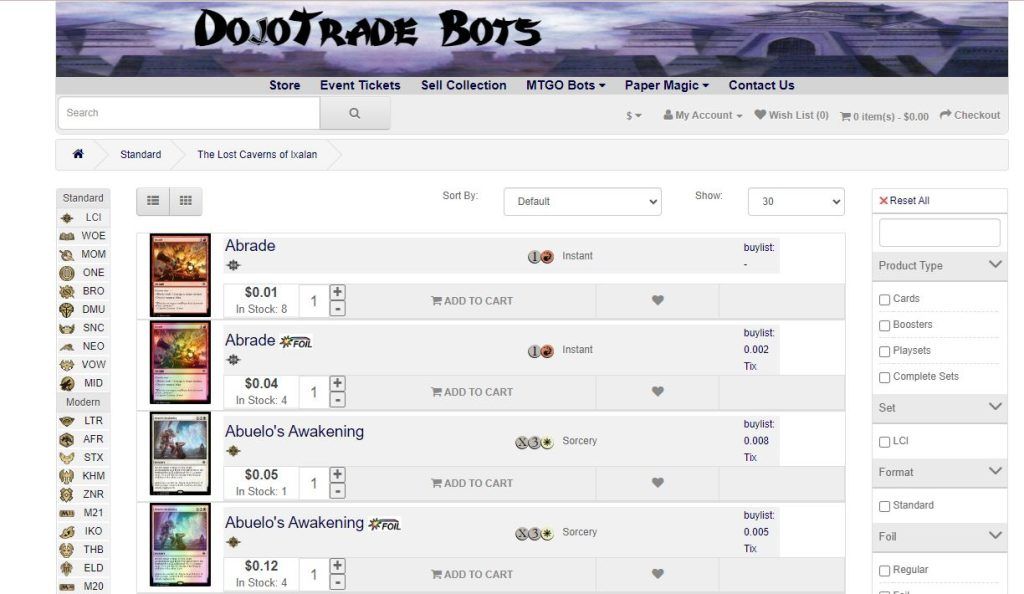
Selling Cards on Magic Online
GoatBots
While there are different MTGO bots you can use to sell your collection, I have found that GoatBots offer the fairest prices, as it often gives the highest amount for the cards you want to sell. Recent sets are very close in terms of price, while older ones tend to be a little tricky, as card prices can vary significantly. One thing I like about this bot is that the bot will buy most of the cards you would like to sell, while others may not be buying a particular card you have. However, GoatBots has a detailed collection tracker that you can use to manage and watch your collection prices as they go up or down.
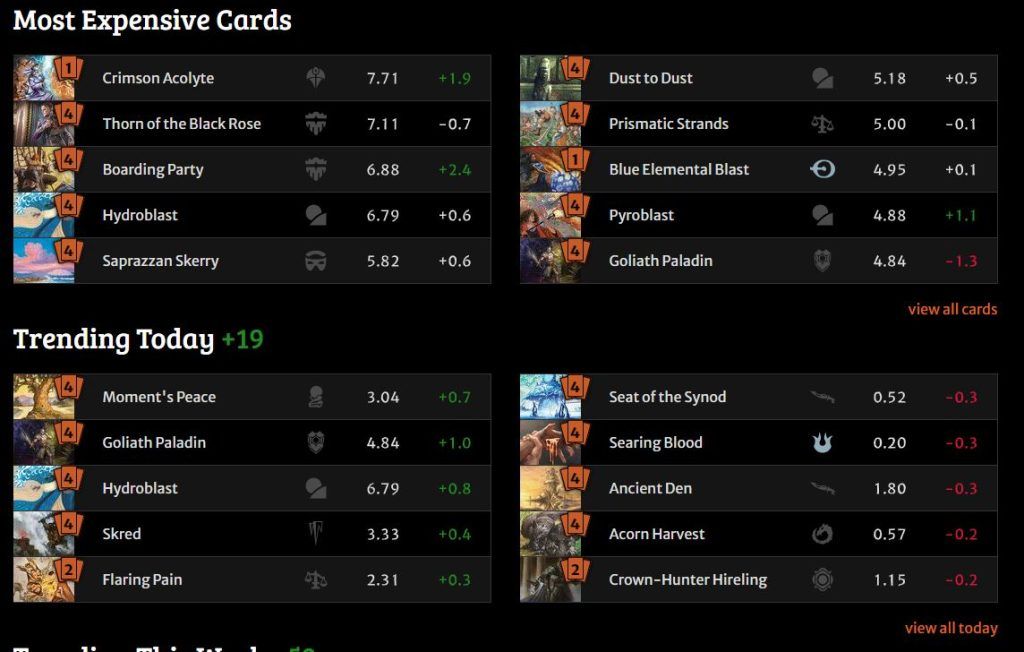
This is very useful because if there’s a card that’s rising in price that you might not be using, you might consider selling it for extra tix. Finally, the Suggested Card Swaps section is another useful tool, as it will recommend suggested card swaps from your collection for cheaper ones that you can acquire at a lower price to earn you extra tickets.

Cardhoarder
Cardhoarder is another place where you can sell your cards. While it may be similar to Goatbots, I found that in general, this chain buys cards for a lower price. Still, it's always good to have as a reference, as it's a good idea to at least double-check in case you find a card that they may be selling for a higher rate.
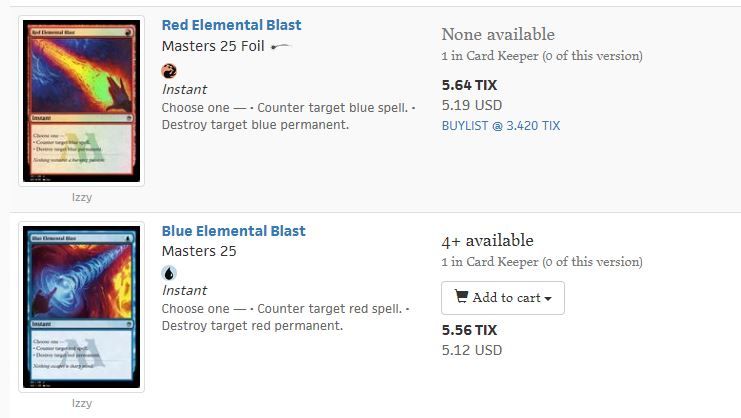
MTGO Traders
Before Cardhoarder, I often relied on selling my cards and tickets through MTGO Traders as they offer similar features, including customer support. However, CH ended up surpassing MTGO Traders in the long run, and the number of cards the latter buys is a bit narrower than what the previous two offer. That said, I had nothing but good experiences selling tickets or cards through MTGO Traders, as the transaction usually takes under 30 mins to get completed.

DojoTradeBots
While I don’t often buy or sell cards from this chain, as I mentioned, it’s often a good idea to check prices on multiple bots. This is especially true when newer sets arrive, as the prices are often very volatile at the beginning. You have around 24 hours from the set release for prices to stabilize, and during this period, you can end up with very good deals from these bots, as they‘re often trying to stock the new set as fast as they can.
If you’d like to sell your cards in bulk, however, you can import your collection to them in a CSV file, and they’ll then send you a quote for their sell rate. You can offer multiple options on how you’d like to receive your money, whether Paypal, wire transfer, or company check.
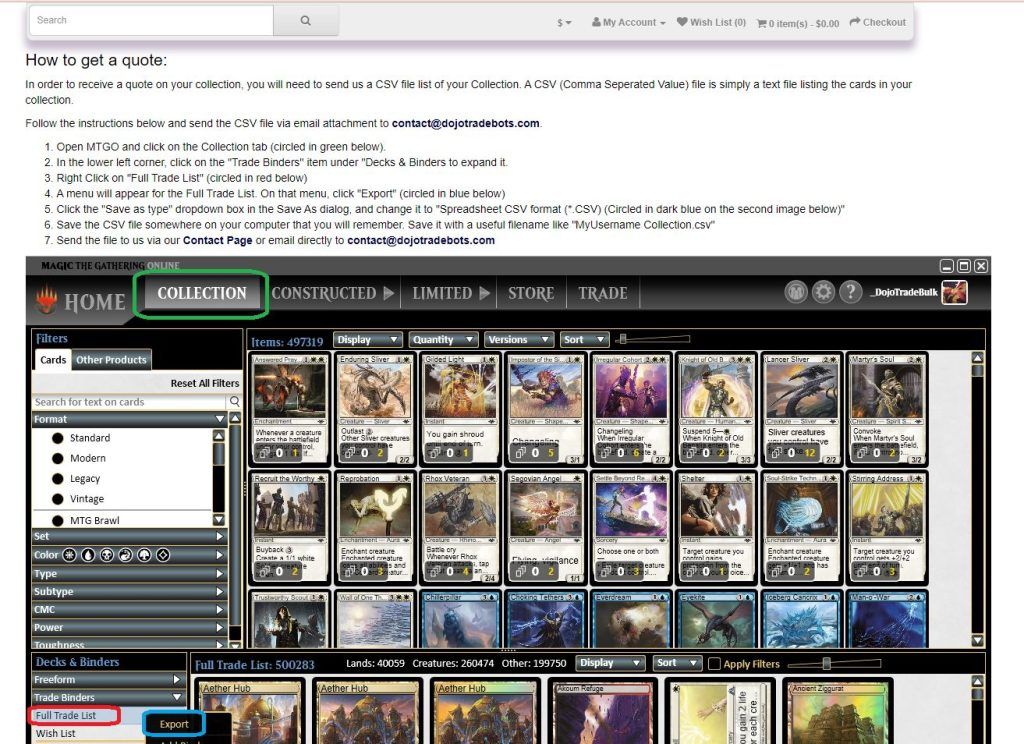
Buying and Selling vs. Trading
While the term “trade” is often used when you do a transaction on MTGO, there’s not really a process where you give some cards in exchange for getting new ones, except if you do it with a friend, but that’s super rare. The way it usually works is to sell your old cards for the price value bots or card retailers give and then reinvest that money to buy new cards.
While this is a bad practice in principle because you’ll almost always get less value from your cards than what you probably paid, it's the only way to get tix credit to then spend towards new cards.
It’s also worth knowing that unless you get rounded Ticket numbers from the bots, you won’t be able to spend the remainder on other chains. For example, suppose you got 2.5 tix by selling a card on Cardhoarder. In that case, you can only subtract 2 tix from the selling bot, and later, if you want to use just a fraction of those two tix, let's say 1.5 in another chain like Goatbots, the bot will keep 0.5 as credit that you can’t subtract unless you use it to get new cards.
This whole process represents a one total ticket loss for you, plus the value of tickets that you lose by selling your cards to begin with. So if you’re hoping to build your collection, I would refrain from simply selling my cards or just stick to a couple of bots that I know have been inside the platform for a while. Others might have higher chances to disappear over the years. Because of this, I mostly prefer just renting my cards from popular sites like Mana Traders, or my personal favorite, Cardhoarder.
Cardhoarder has a monthly base price that grants access to a certain amount of TIX you can spend on renting cards. These cards won’t lose value while rented, and you can return them at any time to reuse the credit for others, allowing you to play many decks. Prices for both platforms are fairly competitive, and for around $15 a month, you get around 500-600 TIX credits, which should be more than enough to build the most popular decks across formats. If you’re a grinder, you can easily pay the fee off from your league or challenge profits.
Wrap Up
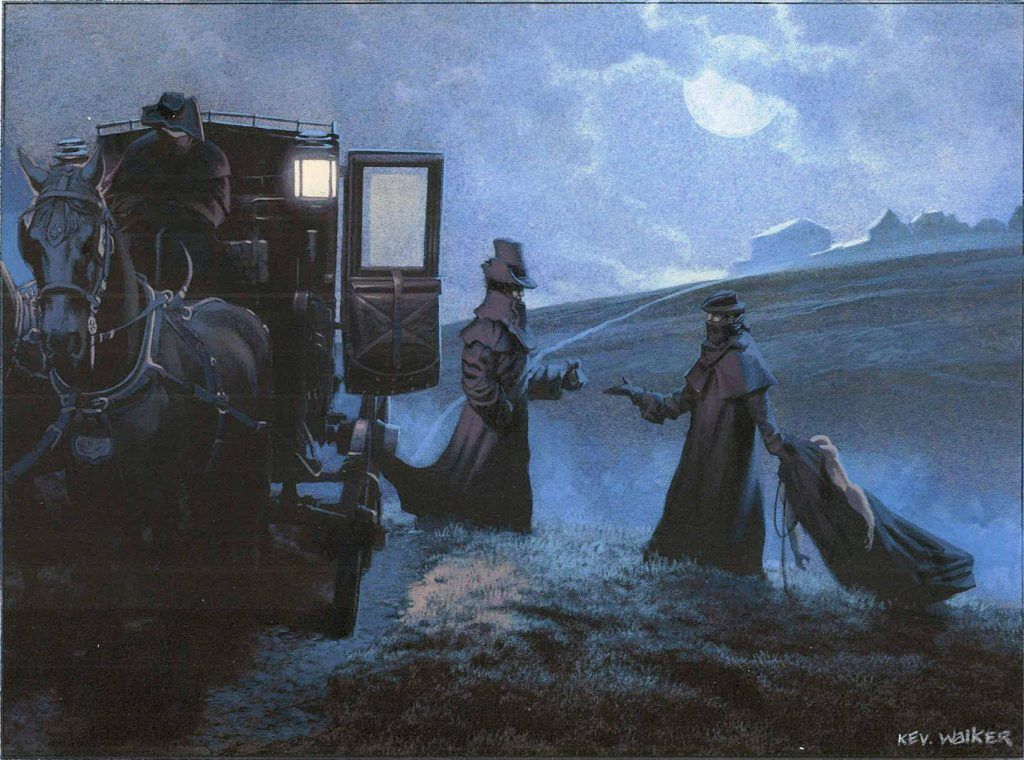
Corpse Traders | Illustration by Kev Walker
It's evident that the Magic Online marketplace offers a myriad of options for everyone. Whether you choose the straightforward route of store purchases, adventure in the world of bot transactions, or engage in strategic selling with other online players, each avenue has its unique advantages.
What’s important is that you know your options, and by understanding each to make an informed decision, you should be able to navigate into MTGO transactions with confidence.
Thank you so much for reading up until know, and if you want to stay ahead of the game of everyone else, follow us on Twitter/X to never miss our guides!
Take care, and we will meet each other on my next article.
Follow Draftsim for awesome articles and set updates:
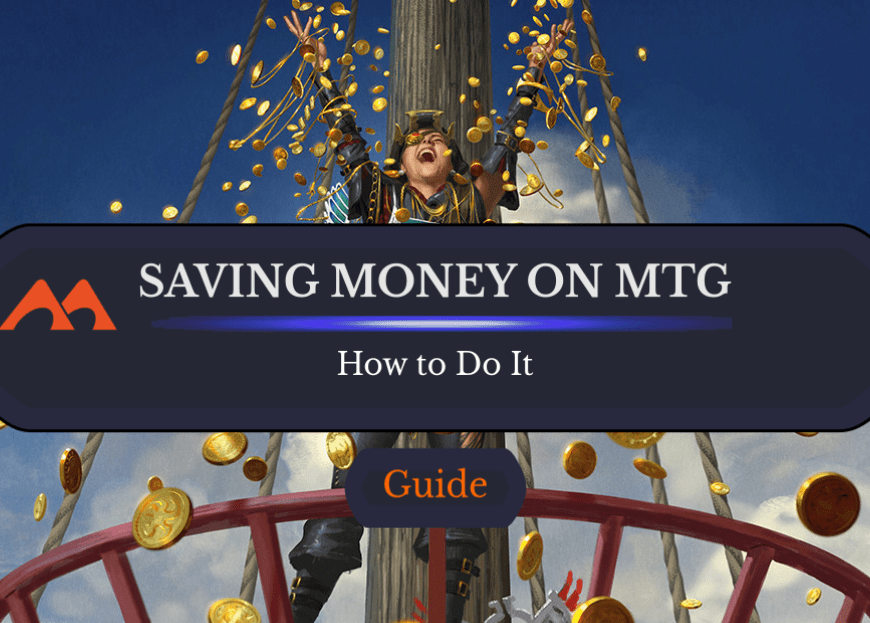
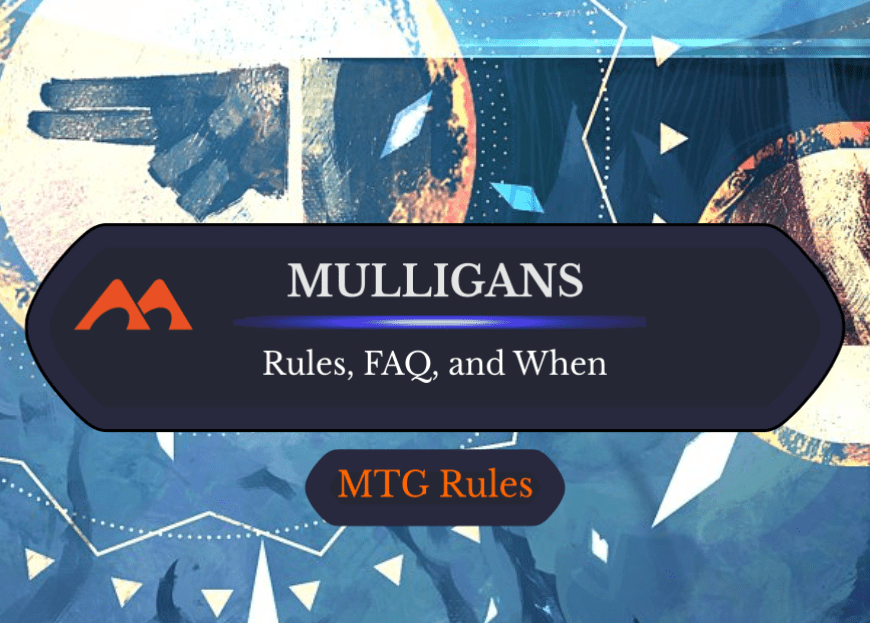
Add Comment